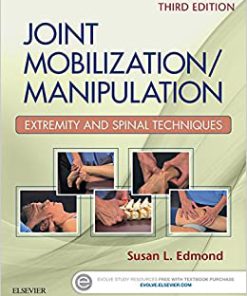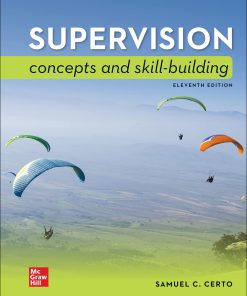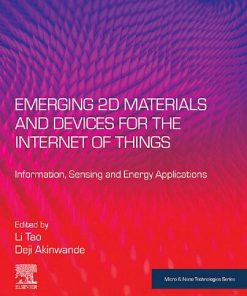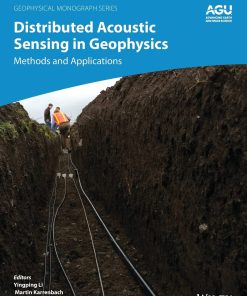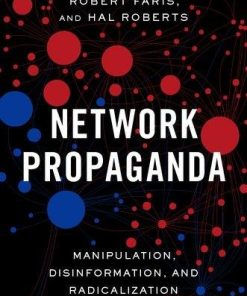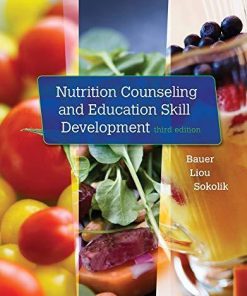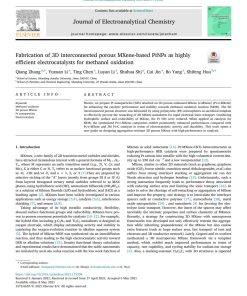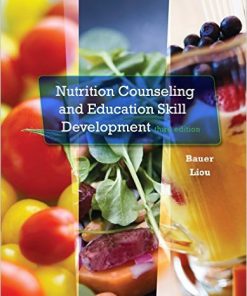Tactile Sensing Skill Learning and Robotic Dexterous Manipulation 1st edition by Qiang Li 0323904173 9780323904179
$50.00 Original price was: $50.00.$25.00Current price is: $25.00.
Tactile Sensing, Skill Learning, and Robotic Dexterous Manipulation 1st edition by Qiang Li – Ebook PDF Instant Download/DeliveryISBN: 0323904173, 9780323904179
Full download Tactile Sensing, Skill Learning, and Robotic Dexterous Manipulation 1st edition after payment.
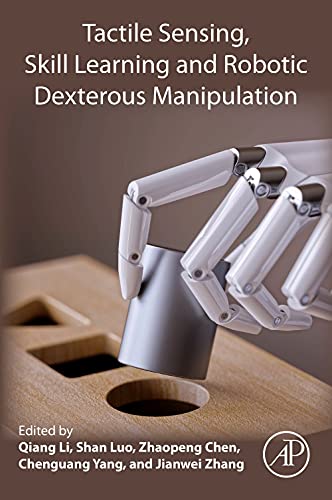
Product details:
ISBN-10 : 0323904173
ISBN-13 : 9780323904179
Author : Qiang Li
Tactile Sensing, Skill Learning and Robotic Dexterous Manipulation focuses on cross-disciplinary lines of research and groundbreaking research ideas in three research lines: tactile sensing, skill learning and dexterous control. The book introduces recent work about human dexterous skill representation and learning, along with discussions of tactile sensing and its applications on unknown objects’ property recognition and reconstruction. Sections also introduce the adaptive control schema and its learning by imitation and exploration. Other chapters describe the fundamental part of relevant research, paying attention to the connection among different fields and showing the state-of-the-art in related branches.
Tactile Sensing, Skill Learning, and Robotic Dexterous Manipulation 1st Table of contents:
Part I: Tactile sensing and perception
Chapter 1: GelTip tactile sensor for dexterous manipulation in clutter
Abstract
Acknowledgement
1.1. Introduction
1.2. An overview of the tactile sensors
1.3. The GelTip sensor
1.4. Evaluation
1.5. Conclusions and discussion
References
Chapter 2: Robotic perception of object properties using tactile sensing
Abstract
2.1. Introduction
2.2. Material properties recognition using tactile sensing
2.3. Object shape estimation using tactile sensing
2.4. Object pose estimation using tactile sensing
2.5. Grasping stability prediction using tactile sensing
2.6. Vision-guided tactile perception for crack reconstruction
2.7. Conclusion and discussion
References
Chapter 3: Multimodal perception for dexterous manipulation
Abstract
Acknowledgement
3.1. Introduction
3.2. Visual-tactile cross-modal generation
3.3. Spatiotemporal attention model for tactile texture perception
3.4. Conclusion and discussion
References
Chapter 4: Capacitive material detection with machine learning for robotic grasping applications
Abstract
4.1. Introduction
4.2. Basic knowledge
4.3. Methods
4.4. Experiments
4.5. Conclusion
References
Part II: Skill representation and learning
Chapter 5: Admittance control: learning from humans through collaborating with humans
Abstract
5.1. Introduction
5.2. Learning from human based on admittance control
5.3. Experimental validation
5.4. Human robot collaboration based on admittance control
5.5. Variable admittance control model
5.6. Experiments
5.7. Conclusion
References
Chapter 6: Sensorimotor control for dexterous grasping – inspiration from human hand
Abstract
Acknowledgements
6.1. Introduction of sensorimotor control for dexterous grasping
6.2. Sensorimotor control for grasping kinematics
6.3. Sensorimotor control for grasping kinetics
6.4. Conclusions
References
Chapter 7: From human to robot grasping: force and kinematic synergies
Abstract
Acknowledgements
7.1. Introduction
7.2. Experimental studies
7.3. Discussion
7.4. Conclusions
References
Chapter 8: Learning form-closure grasping with attractive region in environment
Abstract
8.1. Background
8.2. Related work
8.3. Learning a form-closure grasp with attractive region in environment
8.4. Conclusion
References
Chapter 9: Learning hierarchical control for robust in-hand manipulation
Abstract
9.1. Introduction
9.2. Related work
9.3. Methodology
9.4. Experiments
9.5. Conclusion
References
Chapter 10: Learning industrial assembly by guided-DDPG
Abstract
10.1. Introduction
10.2. From model-free RL to model-based RL
10.3. Guided deep deterministic policy gradient
10.4. Simulations and experiments
10.5. Chapter summary
References
Part III: Robotic hand adaptive control
Chapter 11: Clinical evaluation of Hannes: measuring the usability of a novel polyarticulated prosthetic hand
Abstract
11.1. Introduction
11.2. Preliminary study
11.3. The Hannes system
11.4. Pilot study for evaluating the Hannes hand
11.5. Validation of custom EMG sensors
11.6. Discussion and conclusions
References
Chapter 12: A hand-arm teleoperation system for robotic dexterous manipulation
Abstract
12.1. Introduction
12.2. Problem formulation
12.3. Vision-based teleoperation for dexterous hand
12.4. Hand-arm teleoperation system
12.5. Transteleop evaluation
12.6. Manipulation experiments
12.7. Conclusion and discussion
References
Chapter 13: Neural network-enhanced optimal motion planning for robot manipulation under remote center of motion
Abstract
13.1. Introduction
13.2. Problem statement
13.3. Control system design
13.4. Simulation results
13.5. Conclusion
References
Chapter 14: Towards dexterous in-hand manipulation of unknown objects
Abstract
Acknowledgement
14.1. Introduction
14.2. State of the art
14.3. Reactive object manipulation framework
14.4. Finding optimal regrasp points
14.5. Evaluation in physics-based simulation
14.6. Evaluation in a real robot experiment
14.7. Summary and outlook
References
Chapter 15: Robust dexterous manipulation and finger gaiting under various uncertainties
Abstract
15.1. Introduction
15.2. Dual-stage manipulation and gaiting framework
15.3. Modeling of uncertain manipulation dynamics
15.4. Robust manipulation controller design
15.5. Real-time finger gaits planning
15.6. Simulation and experiment studies
15.7. Chapter summary
People also search for Tactile Sensing, Skill Learning, and Robotic Dexterous Manipulation 1st:
tactile dexterity
tactile sensing
tactile detection
tactile sensing in dexterous robot hands — review
a tactile learner
Tags: Tactile Sensing, Skill Learning, Robotic Dexterous, Dexterous Manipulation, Qiang Li
You may also like…
Technique - Construction
Computers - Artificial Intelligence (AI)
Earth Sciences - Geophysics
Distributed Acoustic Sensing in Geophysics: Methods and Applications
Politics & Philosophy
Network Propaganda: Manipulation, Disinformation, and Radicalization in American Politics Benkler
Uncategorized




